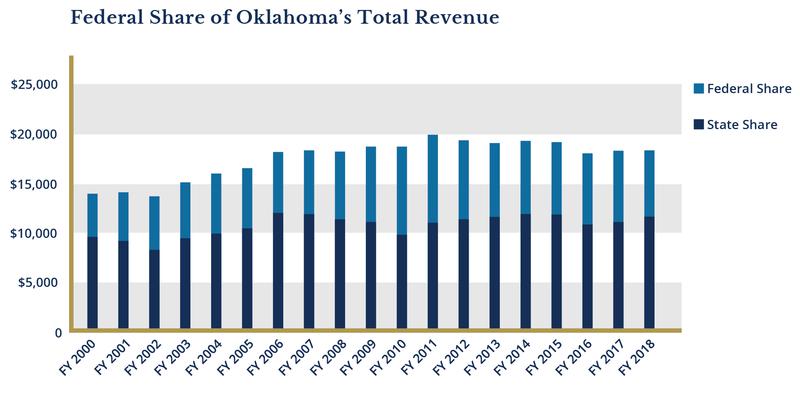
Health Care
Medicaid expansion means more federal control
November 5, 2019
Curtis Shelton
“Bring our federal dollars home,” a frequent rallying cry of Medicaid-expansion proponents, shows how misinformed many people are regarding the nature of our nation’s Medicaid program and how it is funded.
In a previous article I pointed out that there is no pot of “free” Medicaid money waiting to be spent. Medicaid is not like your Netflix account, where your friend’s cousin pays for it and you get to use it free of charge. Expanding Medicaid would add additional costs for the federal government which must be paid in one of two ways: raising taxes or increasing the deficit. Not only would expanding Medicaid cost money, it would also result in Oklahoma giving away more authority to the federal government.
Currently Oklahoma’s total budget is $18.6 billion. Fully $6.7 billion, or 36 percent, of that money comes from the federal government. Our reliance on federal funds has fallen steadily since the Great Recession, when the federal share hit a peak of 47 percent of Oklahoma’s total revenue. The latest data show that number has fallen to 36 percent, the lowest total since 2008.

Source: OMES’ Comprehensive Annual Financial Reports
Expanding Medicaid in Oklahoma would allow an estimated 628,000 able-bodied adults to be newly eligible for the program. These potential enrollees would cost an estimated $3.7 billion. With the current federal match rate, the federal government would pay for $3.4 billion while Oklahoma would be responsible for $374 million. Holding all else equal, if Oklahoma was paying for Medicaid expansion in 2018 the amount of money received from the federal government would have grown to $10.4 billion. That would result in more than 55 percent of Oklahoma’s state budget being controlled by the federal government.
Giving up this much authority is a serious issue. There is no guarantee the federal government won’t add additional requirements in exchange for these federal dollars. There are currently more than 1,800 regulatory strings attached to Medicaid dollars that states must abide by in order to receive funding. The further away the decision-makers get, the less likely Oklahomans are to benefit. While some Oklahomans may see the current federal administration as friendly to Oklahoma’s interests, administrations are fleeting compared to government programs. Since 1965, when Medicaid was first established, the program has grown to $500 billion throughout nine different administrations. Expanding Medicaid would give D.C. politicians even more of a say in what happens in Oklahoma.
As Greg Forster explained in another context, “the real problem is not where the money goes but where the money comes from.”
If the federal government found a giant pot of leprechaun’s gold every year, so that the only question was how to use the money, it might be worth discussing whether some of that money should go to the states. But that’s not how things work.
The federal government gets the money for … federal grant programs by taking it from the states by taxing their citizens. Each state has a limited tax base; its citizens can only pay so much in taxes (a lesson we all learned from Arthur Laffer a generation ago). Higher federal taxes reduce the ability of states and localities to raise their own tax revenue.
We gave the federal government the power to tax us in order to fund federal programs—like the military, the State Department, the Supreme Court, national cash-for-clunkers buybacks, and stimulus programs that feed cocaine to monkeys. If the federal government can tax the citizens of the states in order to fund state programs, imposing its own mandates as a condition of receiving the funds, then we no longer really have state governments. The states are just administrative departments of the federal government.
Oklahomans have been wise to avoid the Medicaid-expansion trap, and should continue to do so.